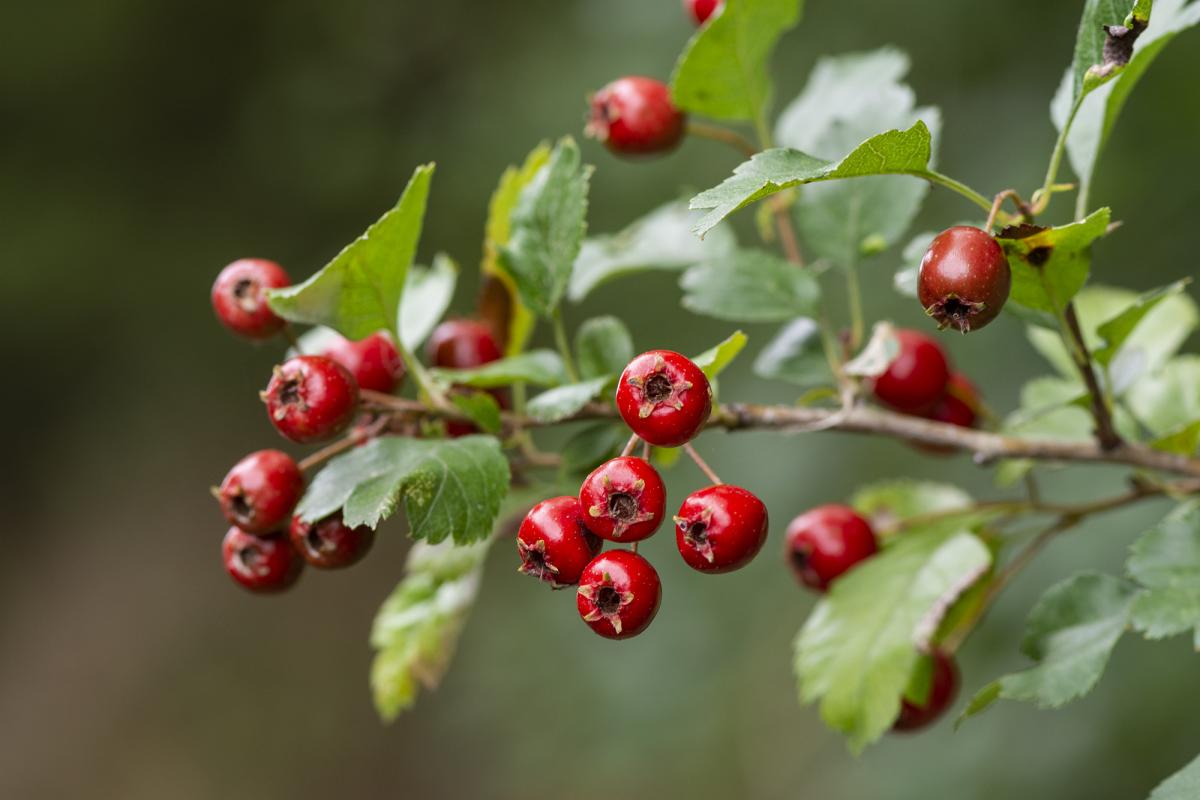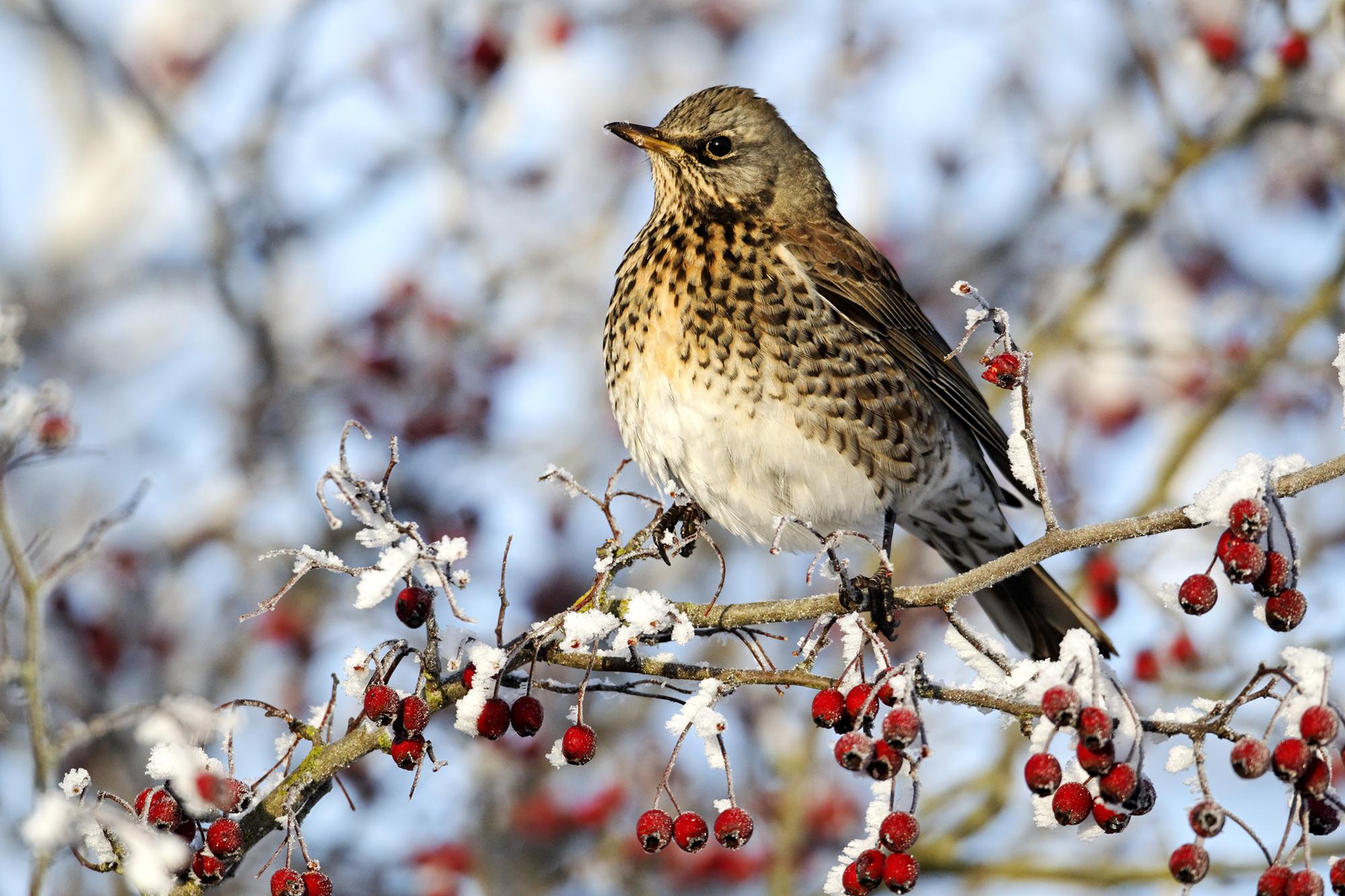
Hurrah for humble hawthorn
The humble hawthorn is a hedgerow shrub that provides a vital habitat teeming with its very own galaxy of insects and wildlife, and an invaluable source of winter nutrition for many species.
It is also known as the whitethorn or the May tree as this is the month in which it flowers and adds a swathe of creamy-white colour to the Forest and its hedgerows. However, although May is the month when the hawthorn attracts most attention from bees and other pollinating insects, it holds a wealth of other benefits for wildlife, with its berries, or ‘haws’, providing food through the bleak winter months.
Providing a midwinter meal
For centuries, the hawthorn, with its thorny, gnarled branches has been popular in hedgerows as it provides the perfect natural barrier to prevent straying livestock, and that’s where countless can still be found. Although many landowners tend to cut back hawthorn bushes to maintain a compact hedgerow, around the Heart of England Forest a concerted effort is made to avoid cutting them back too much. In many parts of the Forest, hedgerows are not cut back at all, while others are cut back in rotation, ensuring plenty of berries are left for wildlife to feed on over the winter.
Rich in antioxidants, red haws take longer to ripen and hold less moisture than other berries and fruit such as crab apples, sloes and holly berries, meaning that hawthorn bushes hold on to their bounty much longer. As the other berries favoured by wildlife become scarce, the haws are still plentiful and provide emergency rations well into the depths of winter.
The common hawthorn supports at least 300 species of insects, including the caterpillars of moths such as the light emerald, lackey, small eggar, vapourer and lappet. Hawthorn leaves provide food for them throughout spring and summer. Meanwhile, the dense foliage makes the bushes perfect nesting spots for a variety of bird species, with a banquet of juicy caterpillars at close quarters upon which to feed their young.

The stuff of legend
Steeped in folklore, the hawthorn has long been the subject of various myths and legends. Ancient Britons believed that bringing hawthorn blossom into the house would be followed by illness and death, while in Mediaeval times it was said that it smelled liked the Great Plague! Another legend has it that old hawthorn trees were really witches who had transformed themselves into trees, while in Ireland the hawthorn is said to be one of the ‘fairy tree triad’ with oak and ash. Where the three are found together, fairies can be found, although we are unable to confirm or deny this at the Heart of England Forest!
Keep your eyes peeled for the humble hawthorn and let us know what you spot feasting on its berries or nestled in its boughs this winter. If you have the space, why not plant your own hawthorn hedge in the back garden – winter is the perfect time to do this as the roots are dormant, or collect some berries, remove the seed and grow your own hawthorn hedgerow! For some handy hints on growing your own hawthorn, check out treegrowing.tcv.org.uk.



